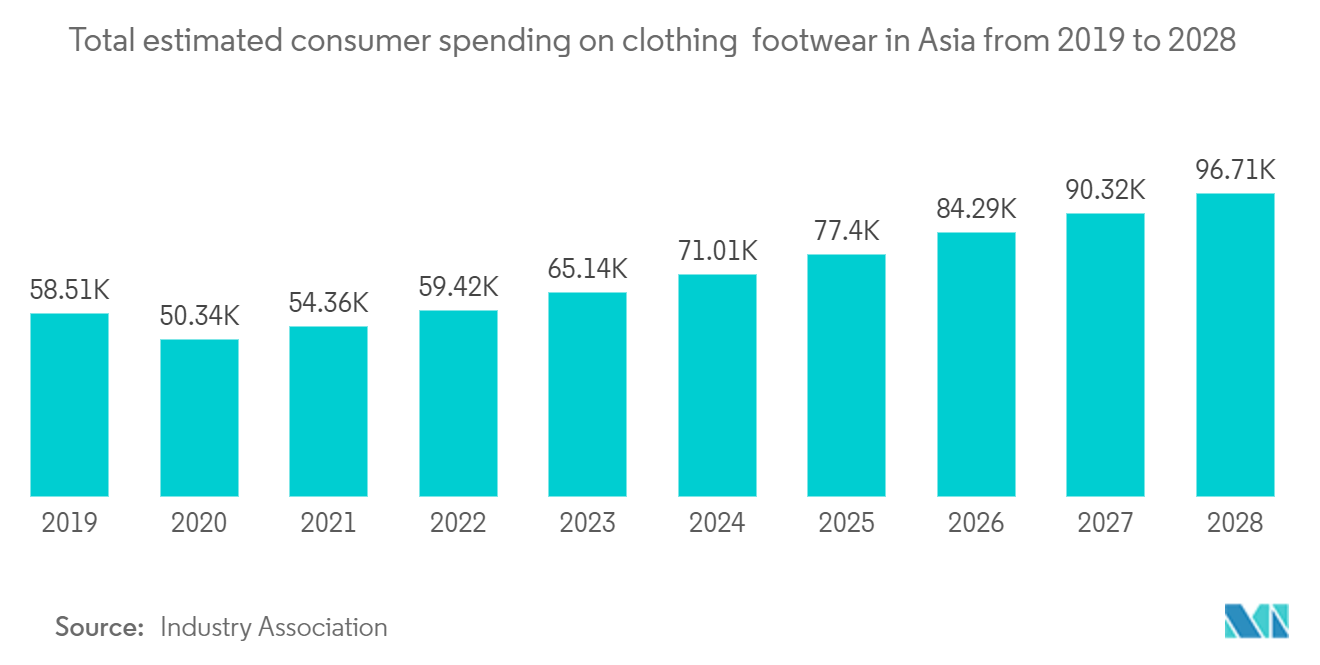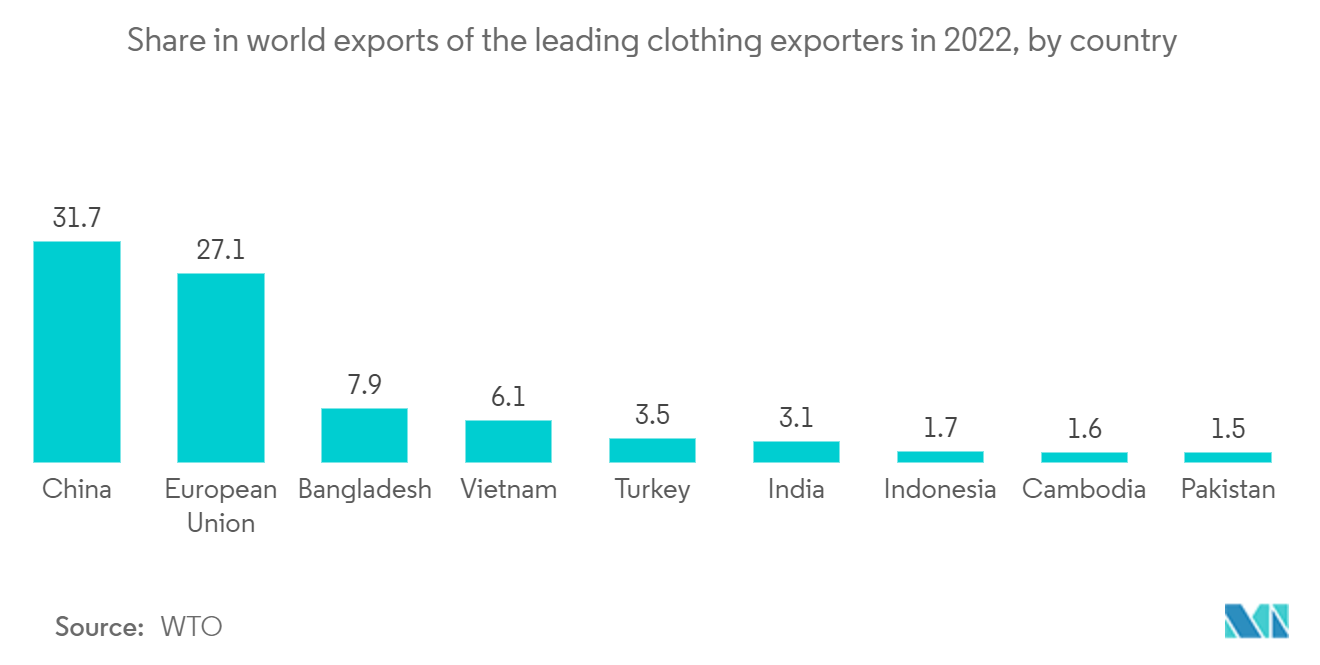Market Trends of Asia-Pacific Textile Industry
Increase in Consumer Spending in Fashion Accessories in Asia
The total consumer spending on clothing and footwear in Asia was forecast to continuously increase between 2024 and 2028 by a total of 27.8 billion U.S. dollars (+35.8 percent). After the eighth consecutive increasing year, fashion-related spending is estimated to reach 105.4 billion U.S. dollars and, therefore, a new peak in 2028.
The ongoing labor market recovery will also aid consumer confidence and, hence, spending. As demand for clothing from Asia (mainly China) grows, the importance of Europe and North America in this sector is declining. Sales of clothing products outside North America and Europe equaled sales in these regions in 2021, and they are expected to reach 55% of the total world sales of clothing products in 2025.
The Asia-Pacific region (Vietnam, the Philippines, Indonesia, Malaysia, Thailand, and Singapore) is highly attractive to the apparel sector, especially because it has a large proportion of young people for whom digital solutions play an important and growing role.

Increase in Exports Boosting Revenue in Asia
In 2022, China was the top-ranked global clothing exporter, with a share of approximately 31.7 percent, followed by the European Union, Bangladesh, and Vietnam. In that year, China and the European Union were also the leading textile exporters in the world.
Many Asian economies have established garment, textiles, and footwear (GTF) manufacturing industries that contribute considerably to their GDPs and the global apparel market. China's export figures translate to almost 52.2% of the total textile export market in Asia.
The shift in consumer perception of affordable and comfortable clothing increases the demand for high-value fabrics, such as viscose, silk, and hemp. Blended varieties of fibers are also growing exponentially due to significant features of artificial and natural yarn, thus opening up new markets and growth opportunities in the coming years.
Polyester and cotton are widely used textile yarn products in the region. Changing consumption patterns, increasing population, disposable incomes, and the increasing demand for clothing and home furnishing products in the Asia-Pacific region are the major growth factors.
Also, the demand for home textiles is rising in the APAC region. Home textile includes products such as blankets, bedsheets, table cloths, cleaning and kitchen cloths, drapes, bed covers, sheers, wall carpets, sleeping bags, terry towels, mattresses, quilts, pillows, tapestry, etc., which are utilized in the interiors of homes, hotels, offices, etc.


